
Ethnoarchaeology
Scope & Guideline
Bridging Cultures: Unraveling the Past Through Contemporary Practices
Introduction
Aims and Scopes
- Culinary Practices and Foodways:
Investigating traditional and contemporary food practices, the journal explores how food preparation, consumption, and cultural significance inform our understanding of past societies. This includes studies on brewing, cooking methods, and plant-based food sources. - Cultural Identity and Community Practices:
The journal examines how cultural identity is expressed through material culture and community practices, focusing on the roles of artisans, potters, and other craft producers in shaping social dynamics and identities. - Technological and Experimental Approaches:
Utilizing experimental archaeology and technological analysis, the journal assesses ancient manufacturing techniques and their implications for understanding past human behavior and cultural evolution. - Environmental and Subsistence Adaptations:
The journal highlights how different cultures adapt to their environments through subsistence strategies, including agricultural practices, water management, and resource utilization. - Indigenous Knowledge and Contemporary Relevance:
It emphasizes the importance of indigenous knowledge systems and practices in understanding historical contexts, as well as their relevance to contemporary issues such as conservation and sustainability.
Trending and Emerging
- Maritime and Coastal Studies:
An increasing focus on maritime cultures and coastal adaptations highlights the significance of water-based lifestyles and cosmologies, reflecting a growing recognition of the importance of maritime archaeology in understanding human history. - Food and Culinary Heritage:
Recent papers emphasize the exploration of culinary heritage and food memories, particularly in the context of diaspora and displacement, showcasing the cultural significance of food as a means of identity preservation. - Interdisciplinary Approaches:
There is a notable trend towards interdisciplinary research that combines ethnoarchaeology with other fields, such as anthropology, environmental science, and history, facilitating a more holistic understanding of past and present human behaviors. - Indigenous Knowledge and Conservation Practices:
The integration of indigenous knowledge systems into archaeological research is becoming increasingly prominent, underscoring the importance of these perspectives in contemporary conservation efforts and cultural heritage management. - Impact of Globalization on Local Practices:
The examination of how globalization affects local cultural practices and material culture is gaining traction, reflecting a broader interest in understanding the dynamics of cultural change in a globalized world.
Declining or Waning
- Experimental Replication Studies:
Although experimental archaeology remains a vital area, there has been a noticeable reduction in the number of papers focused solely on experimental replication of ancient techniques, suggesting a shift towards more integrative approaches that combine multiple methodologies. - Traditional Pottery Analysis:
The detailed analysis of traditional pottery and its production methods appears to be less frequent, possibly overshadowed by broader themes concerning foodways and community practices. - Historical Archaeology of Specific Regions:
Research focusing on the historical archaeology of specific regions, particularly less-studied areas, has diminished, indicating a potential decline in interest in localized studies in favor of broader comparative analyses.
Similar Journals
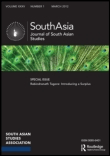
SOUTH ASIA-JOURNAL OF SOUTH ASIAN STUDIES
Fostering Insightful Perspectives on South Asia's HeritageSOUTH ASIA-JOURNAL OF SOUTH ASIAN STUDIES, published by Routledge Journals, Taylor & Francis Ltd, stands as a seminal platform for scholarly discourse in South Asian studies. With a proud history dating back to 1971, the journal provides a comprehensive examination of the region's multifaceted cultural, historical, and socio-political dynamics. Renowned for its rigorous peer-reviewed articles, it is listed in the prestigious Q1 category in Cultural Studies and History and has garnered respect across the social sciences, indicated by its competitive rankings in Development and Sociology and Political Science. Although it does not currently offer open access, the journal's influence is evident, boasting an impressive impact in its fields as indicated by its Scopus rankings, with a noteworthy 88th percentile in History. Targeted towards researchers, professionals, and students alike, SOUTH ASIA-JOURNAL OF SOUTH ASIAN STUDIES is essential for anyone seeking to deepen their understanding of South Asian complexities and contribute to ongoing academic conversations.

ARYS-Antiguedad Religiones y Sociedades
Fostering Insights into the Dynamics of Religion and SocietyARYS-Antiguedad Religiones y Sociedades is a prestigious academic journal published by UNIV CARLOS III MADRID, INST HISTORIOGRAFIA JULIO CARO BAROJA that focuses on the intricate relationships between ancient religions and societies. With an ISSN of 1575-166X and an E-ISSN of 2173-6847, this journal has established itself as an influential platform for scholarly discourse from 2019 to 2023, achieving a commendable Q2 ranking in both History and Religious Studies categories. Despite not being an open-access journal, it offers valuable insights for researchers and professionals delving into the historical contexts of religious beliefs and their societal implications. The journal's rigorously peer-reviewed content aims to foster a deeper understanding of ancient civilizations and their spiritual practices, making it an essential resource for academics, students, and practitioners in the fields of history and religious studies. Join the growing community of scholars who contribute to and benefit from the rich tapestry of knowledge presented in ARYS-Antiguedad Religiones y Sociedades.
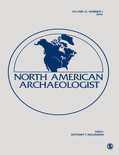
NORTH AMERICAN ARCHAEOLOGIST
Charting the Course of Archaeological DiscoveryNORTH AMERICAN ARCHAEOLOGIST, published by SAGE PUBLICATIONS INC, is a prestigious journal that serves as an essential resource for professionals and scholars in the field of archaeology. With its ISSN 0197-6931 and E-ISSN 1541-3543, the journal aims to disseminate high-quality research that contributes to the understanding of the historical and cultural significance of North America from prehistory to the present. As of 2023, it holds an impressive Q2 category in Archaeology and ranks within the Q1 tier for Archaeology (arts and humanities), positioning it among the top journals in its field. Its Scopus rankings further emphasize its significance, reflecting a commendable percentile standing that underscores its influence in both arts and humanities and social sciences. The journal is committed to offering a platform for innovative research and scholarly discussion, making it invaluable for researchers, professionals, and students dedicated to advancing archaeological knowledge.

Journal of Paleolithic Archaeology
Exploring the Depths of Human PrehistoryJournal of Paleolithic Archaeology, published by SpringerNature, stands at the forefront of scholarly research in the field of archaeology, focusing specifically on the rich and complex narratives of human prehistory. With an E-ISSN of 2520-8217, this engaging journal serves as a vital resource for researchers, professionals, and students alike, offering open-access articles that disseminate groundbreaking discoveries and theoretical advancements in Paleolithic studies. The journal's objective is to foster a deeper understanding of early human culture, technology, and the environment, ensuring accessibility to vital knowledge that shapes our understanding of human evolution. As the field of archaeology continues to evolve with innovative methodologies and interdisciplinary approaches, the Journal of Paleolithic Archaeology emerges as an essential platform for sharing insights and fostering a vibrant academic community dedicated to unraveling the mysteries of our ancient past.
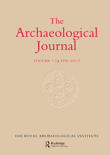
Archaeological Journal
Advancing Knowledge, Preserving Our PastArchaeological Journal, published by Taylor & Francis Ltd, stands as a leading voice in the field of archaeology, with a remarkable distinction in the Q1 category for both arts and humanities as well as conservation, underscoring its critical role in advancing scholarly dialogue and research. With an ISSN of 0066-5983 and E-ISSN of 2373-2288, this journal provides a platform for innovative research from 1977, now offering insights up to 2024. The United Kingdom-based journal is highly regarded, being within the top 81st percentile in archaeology and conservation according to Scopus rankings. Essential for researchers, professionals, and students, the journal's content spans rigorous archaeological studies, theoretical advancements, and discussions on conservation practices, ultimately aimed at fostering a deeper understanding of humanity's past. Notably, with no open access option, it maintains a traditional publishing approach, thereby ensuring curated and high-quality contributions to the academic community.
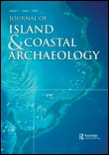
Journal of Island & Coastal Archaeology
Uncovering Coastal Narratives Through TimeThe Journal of Island & Coastal Archaeology, published by Routledge Journals, Taylor & Francis Ltd, stands as a leading publication in the fields of archaeology, ecology, and history, boasting a prestigious Q1 ranking in multiple categories as of 2023. Since its inception in 2006, this journal has been a vital resource for researchers, professionals, and students interested in the rich archaeological heritage of island and coastal regions. With an impressive Scopus ranking that places it in the top tiers of both Arts and Humanities and Social Sciences, it offers insightful studies and innovative methodologies that address the complexities of human interactions with marine and terrestrial environments. The journal aims to advance knowledge and promote discussion through rigorous peer-reviewed articles, fostering a deeper understanding of indigenous cultures and their environmental contexts. While currently not offering an open-access model, the journal remains committed to disseminating high-quality research crucial for shaping future archaeological scholarship.
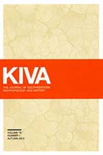
Kiva-Journal of Southwestern Anthropology and History
Advancing Knowledge in Anthropology and HistoryKiva - Journal of Southwestern Anthropology and History is a distinguished academic journal published by Routledge Journals, Taylor & Francis Ltd, that serves as a vital resource for scholars in the fields of anthropology, archaeology, and history. With an ISSN of 0023-1940 and an E-ISSN of 2051-6177, this journal has established itself as a significant avenue for scholarly communication since its inception in 1964. It consistently ranks in the top quartiles, including Q1 in Archaeology and Q2 in Anthropology, reflecting its high impact and rigorous peer-review process. Covering a wide array of topics pertinent to the Southwestern United States, Kiva invites original research articles, reviews, and methodological papers that advance understanding of the region's rich cultural heritage and historical narratives. While currently not open access, its commitment to disseminating quality research makes it an essential reading for researchers, professionals, and students aiming to explore the multifaceted dimensions of southwestern studies.

Intersecciones en Antropologia
Unlocking the richness of human experience.Intersecciones en Antropologia, published by the Universidad Nacional del Centro de la Provincia de Buenos Aires (UNICEN), Facultad de Ciencias Sociales, is a premier open-access journal in the field of anthropology, having established its presence since 2010. With an impressive impact factor and currently holding the distinguished Q1 quartile ranking in anthropology for 2023, this journal has quickly become a vital resource for scholars and practitioners alike, offering a platform for innovative research and critical discussion. The journal aims to advance anthropological scholarship by encouraging the dissemination of diverse perspectives and stimulating dialogue across geographical and cultural boundaries. Its open-access model, adopted in 2017, ensures that valuable research findings are accessible to a global audience, fostering collaboration and engagement within the academic community and beyond. Located in the vibrant cultural context of Argentina, Intersecciones en Antropologia serves as a conduit for significant anthropological dialogues, making it an essential read for those dedicated to understanding and contributing to the evolving landscape of social sciences.

JOURNAL OF WORLD PREHISTORY
Illuminating the Path of Archaeological ScholarshipJOURNAL OF WORLD PREHISTORY, published by SPRINGER, stands as a premier platform for disseminating pioneering research and scholarship in the field of archaeology. Boasting a prestigious Q1 status in Archeology and a remarkable 97th percentile ranking in its category, this journal has made significant contributions to the understanding of global prehistory since its inception in 1987. It serves as an invaluable resource for researchers, professionals, and students alike, providing access to high-quality articles that explore diverse archaeological methodologies, theoretical frameworks, and case studies. Although it is not an open-access journal, its impact and relevance continue to resonate within the academic community, fostering critical discussions and advancing knowledge in this vital discipline. With publications converging from 2006 and set to continue until 2024, the JOURNAL OF WORLD PREHISTORY remains committed to advancing archaeological research and enhancing interdisciplinary collaboration.

Archaeological and Anthropological Sciences
Bridging Disciplines, Uncovering InsightsArchaeological and Anthropological Sciences is an esteemed peer-reviewed journal published by Springer Heidelberg, specializing in the interdisciplinary fields of archaeology and anthropology. Since its inception in 2009, this journal has established itself as a pivotal resource for researchers and professionals, featuring cutting-edge studies that bridge the gap between the sciences and humanities. With its impressive 2023 Q1 rankings in Anthropology and Archaeology categories, the journal stands out in the Scopus landscape, ranking within the top 5% of its field—Rank #18/413 in Archaeology (Arts and Humanities) and Rank #28/502 in Anthropology. This is complemented by its commitment to disseminating high-quality research to a global audience, despite being a non-Open Access publication. The journal's scope encompasses innovative methodologies, archaeological findings, and anthropological insights that are vital for advancing knowledge and fostering academic discourse. As it moves toward its upcoming converged years, Archaeological and Anthropological Sciences continues to solidify its reputation as a key forum for scholarly exchange in these fields.